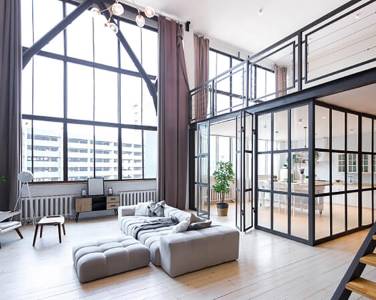Description
Particle Board: A Versatile and Cost-Effective Material
Particle board, also known as chipboard, is an engineered wood product manufactured from wood particles, resins, and waxes that are bound together under pressure and heat. This process creates a flat sheet material ideal for a wide range of applications, offering a balance of affordability and functionality.
Key Features and Benefits:
- Cost-Effective: Particle board is significantly cheaper than solid wood, making it a budget-friendly option for various projects.
- Versatile: Its flat, uniform surface is easily machinable, allowing for cutting, drilling, routing, and sanding. This makes it suitable for a diverse array of applications.
- Lightweight: Compared to solid wood, particle board is lighter, making it easier to handle and transport.
- Uniformity: The manufacturing process results in a consistently flat and smooth surface, ideal for furniture and other applications requiring a flat base.
- Strength and Stability: While not as strong as solid wood, particle board offers sufficient strength and stability for many applications, especially when used in conjunction with other materials like veneers or laminates.
- Availability: Particle board is widely available in various sizes and thicknesses, ensuring easy accessibility for most projects.
Types of Particle Board:
Particle board is available in several grades and finishes, each tailored to specific needs:
- Standard Particle Board: This is the most common type, suitable for applications where a smooth, flat surface is required and where the board will be covered with a veneer, laminate, or other surface material.
- Moisture-Resistant Particle Board: Treated to withstand higher levels of humidity, this type is ideal for use in bathrooms, kitchens, and other damp environments. However, it's not fully waterproof.
- Melamine-Coated Particle Board: This type has a melamine resin coating applied to the surface, providing a durable, scratch-resistant, and easy-to-clean finish. It's often used in furniture and cabinetry.
Applications:
Particle board finds extensive use in various applications, including:
- Furniture Manufacturing: A common base material for cabinets, shelving, drawers, and other furniture components.
- Construction: Used in flooring underlayment, wall paneling, and as a base for countertops.
- Packaging: Utilized in the creation of crates, pallets, and other shipping materials.
- DIY Projects: A popular choice for crafting, shelving units, and various hobby projects.
Limitations:
- Not Water-Resistant (unless specifically treated): Standard particle board is susceptible to moisture damage and should not be used in excessively wet environments.
- Lower Strength than Solid Wood: It's less durable and strong than solid wood and may not be suitable for applications requiring high strength.
- Can be prone to chipping and breakage at edges: Proper handling and edge sealing are recommended.
Choosing the Right Particle Board:
When selecting particle board, consider the following factors:
- Thickness: Choose the appropriate thickness based on the intended application and load-bearing requirements.
- Type: Select the type that best suits the environment and intended use (standard, moisture-resistant, melamine-coated).
- Size: Particle board is available in various standard sizes, ensuring you can find the right dimensions for your project.
Particle board remains a valuable and versatile material for various construction and manufacturing applications, offering an economical and easily workable solution for a wide range of projects.
